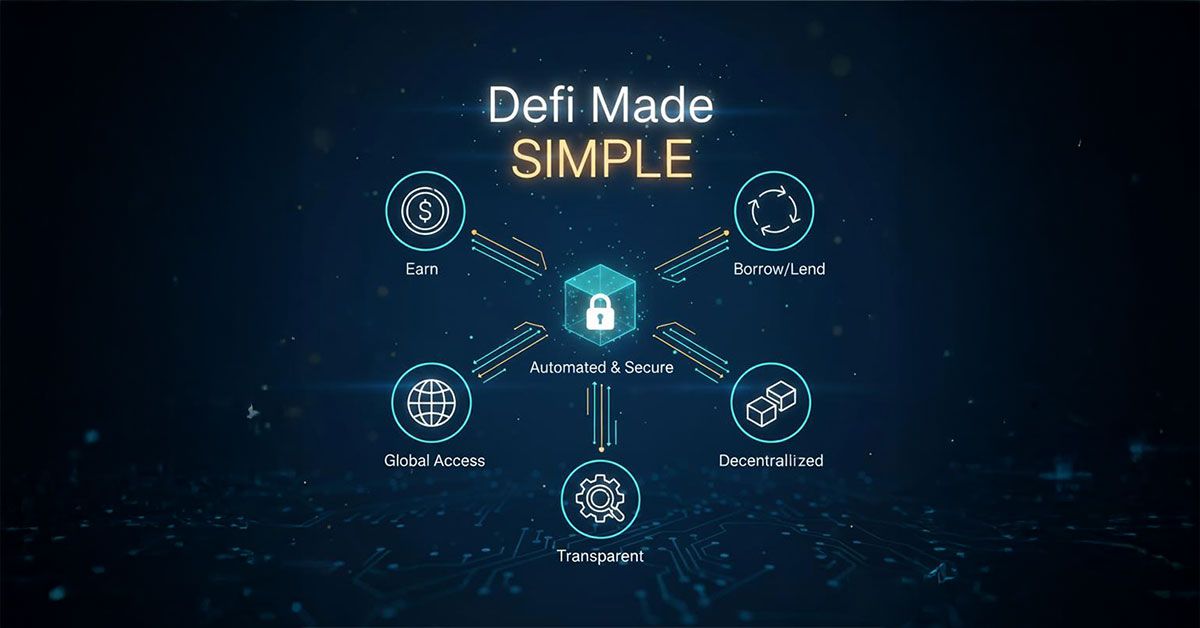Introduction
The decentralized finance (DeFi) space has exploded over the past few years. With thousands of tokens, dozens of blockchains, and hundreds of decentralized exchanges (DEXs), navigating DeFi can feel overwhelming even for seasoned traders. This is where DeFi aggregators step in.
DeFi aggregators are platforms that pull liquidity and pricing data from multiple sources to give users the best possible trade execution, lowest fees, and fastest transaction routes. Think of them as the “Kayak” or “Google Flights” of crypto, instead of visiting every airline separately, you get a single interface that finds you the best deal.
In 2025, aggregators have become a core part of the DeFi ecosystem. Let’s explore how they work, their benefits, risks, and the leading platforms shaping the space.
What is a DeFi Aggregator?
A DeFi aggregator is a tool or platform that connects to multiple DEXs, liquidity pools, and sometimes centralized exchanges (CEXs), allowing users to:
- Swap tokens at the best available rate.
- Split trades across multiple pools for minimal slippage.
- Access liquidity across chains through bridges.
- Save time by using a single dashboard instead of multiple wallets and apps.
Some aggregators have expanded beyond simple swaps to include lending, yield farming, derivatives, and cross-chain liquidity aggregation.
How Do DeFi Aggregators Work?

DeFi aggregators use smart contracts and APIs to scan liquidity sources in real-time. When a user places a trade, the aggregator’s algorithm:
- Searches multiple DEXs (Uniswap, Curve, Balancer, Sushi, etc.).
- Finds the best route to minimize cost and maximize efficiency.
- Example: A $50,000 ETH → USDC swap may be split into 3 different DEXs to reduce slippage.
- Executes in one transaction via the aggregator’s contract, so the user doesn’t manually visit multiple platforms.
Advanced aggregators now include:
- Cross-chain routing (Ethereum, Arbitrum, Polygon, zkSync, BSC, Avalanche).
- Gas optimization tools.
- MEV protection to prevent front-running.
Benefits of Using DeFi Aggregators
- Best Price Execution: Aggregators route trades across multiple pools for the most favorable rates.
- Lower Slippage: Large trades are automatically split, reducing price impact.
- Time Savings: One dashboard replaces multiple DEX visits.
- Cross-Chain Liquidity: Trade assets across Ethereum, Layer-2s, and sidechains without leaving the platform.
- Access to Advanced Tools: Portfolio tracking, limit orders, yield optimization, and gas-fee minimization.
Risks and Challenges
While DeFi aggregators solve many problems, they are not risk-free. Key concerns include:
- Smart Contract Risk: Bugs or exploits in aggregator contracts can lead to losses.
- MEV (Miner/Validator Extractable Value): Front-running attacks may still occur if not mitigated.
- Liquidity Fragmentation: Even with aggregators, liquidity can be spread thin across chains.
- Regulatory Uncertainty: Some jurisdictions are tightening rules on DeFi protocols, including aggregators.
For users, the best practice is to use reputable platforms, enable slippage protection, and avoid routing huge trades through untested protocols.
Top DeFi Aggregators in 2025
Here are some leading players in the space:
- 1inch – Still the most popular aggregator, with strong cross-chain routing and gas optimization.
- Matcha (by 0x Protocol) – Focused on user-friendly swaps with competitive pricing.
- Paraswap – Known for institutional integrations and MEV protection.
- OpenOcean – Expanding into both DeFi and CeFi (centralized exchange liquidity).
- Odos – A newer entrant gaining traction with its advanced routing engine and AI-powered optimization.
These platforms continue to expand beyond swaps into yield farming, derivatives, and cross-chain liquidity hubs.
DeFi Aggregators and Taxes
From a tax compliance perspective (important for CRPTM users), aggregators:
- Do not change the taxable nature of trades, each swap still counts as a taxable event.
- Make recordkeeping easier since many provide CSV/API exports.
- Complicate transaction tracing if trades are split across multiple pools, since users might not know the exact liquidity sources.
For CPAs and platforms like CRPTM, supporting aggregator transactions means decoding router addresses (e.g., 1inch Router, Uniswap Router) to correctly classify swaps, liquidity adds/removes, and bridge events.
The Future of DeFi Aggregators
Looking ahead, we expect:
- AI-driven routing that predicts liquidity shifts and pre-optimizes trades.
- Tighter integration with Layer-2s and rollups (Arbitrum, Optimism, zkSync).
- More institutional adoption as aggregators provide compliance-friendly APIs.
- Aggregator-of-aggregators, meta-aggregators that query 1inch, Paraswap, Matcha, and combine results for ultimate execution.
As DeFi grows, aggregators will remain the front door to liquidity for both retail traders and institutions.
Conclusion
DeFi aggregators are no longer optional tools; they are essential infrastructure for the modern crypto trader. By providing best execution, reducing slippage, and streamlining cross-chain liquidity, they simplify one of the most complex areas of crypto.
For users, the key is to choose reputable platforms, understand risks, and keep accurate records for tax reporting. For CRPTM and compliance-focused tools, supporting aggregator transactions is critical to helping users stay ahead in 2025’s rapidly evolving DeFi ecosystem.
Disclaimer: The information presented on this website is intended for general informational purposes only and should not be interpreted as professional advice from CRPTM. CRPTM does not offer financial advice. We strongly recommend seeking independent legal, financial, tax, or other professional advice to determine how the information provided on this website applies to your specific circumstances. CRPTM assumes no liability for any loss incurred, whether due to negligence or otherwise, resulting from the use of or reliance on the information contained herein.
